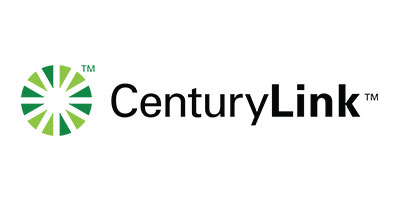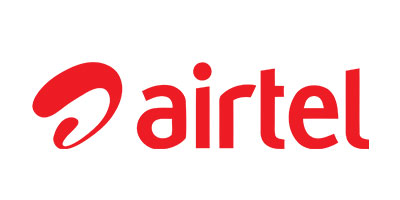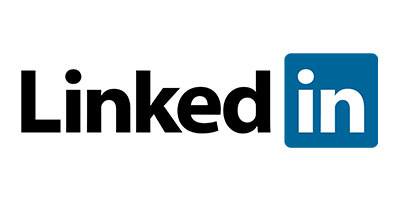Internet Exchange Point (IXP)
Defining an Internet Exchange Point (IXP)
An Internet Exchange Point (IXP) refers to a strategically positioned, physical facility where key Internet infrastructure entities such as Internet Service Providers (ISPs) and Content Delivery Networks (CDNs) interconnect. These sites are situated at the periphery of various networks, enabling network providers to exchange data beyond their systems. By establishing a presence within an IXP facility, organizations can streamline their connection to transit from other participating networks, minimizing latency, enhancing round-trip time, and potentially lowering expenses.
Understanding the Functionality of an Internet Exchange Point (IXP)
Fundamentally, an IXP comprises one or more physical sites equipped with network switches that facilitate data routing between the networks of different members. Through various approaches, these networks collectively shoulder the expenses associated with maintaining the physical infrastructure and its accompanying services. Analogous to the charges incurred when transporting cargo via third-party locations, such as the Panama Canal, networks often levy fees for data delivery across different systems. To bypass these expenses and other disadvantages linked to routing traffic through third-party networks, member organizations utilize IXPs to decrease costs and diminish latency.
IXPs represent expansive Layer 2 LANs (within the OSI network model) constructed using one or multiple Ethernet switches interconnected throughout one or more physical structures. An IXP resembles a home network, differing only in terms of scale. The capacity of IXPs may vary from hundreds of Megabits per second to several Terabits per second in terms of exchanged traffic. Regardless of size, their main objective is to ensure the efficient and seamless connection of numerous networks’ routers. In contrast, a typical home setup involves a single router connected to multiple computers or mobile devices.
Over the past two decades, the growth of network interconnections has mirrored the exponential expansion of the global Internet. This progression encompasses developing new data center facilities designed to accommodate network equipment. Some of these data centers have attracted many networks, primarily due to the thriving IXPs operating within their premises.
The Significance of Internet Exchange Points IXPs plays a crucial role in Internet connectivity by preventing the reliance on intermediary networks, or transit providers, for traffic routing between different networks. While using backbone ISPs for routing international traffic is expected and necessary due to the high costs of maintaining direct connections with every ISP globally, depending on them for local traffic can negatively impact performance. Usually, backbone carriers may route data to another network in a distant city, resulting in a phenomenon known as “tromboning.” In extreme cases, a trombone causes traffic from a town destined for an ISP in the same city to travel long distances before being exchanged and returned. A CDN with an IXP presence optimizes data flow within its network, eliminating inefficient paths.
Understanding the Trombone Effect and BGP The Internet’s backbone protocol, the Border Gateway Protocol (BGP), enables networks to communicate with each other while maintaining a clear distinction between internal requirements and network-edge configurations. All peering at IXPs utilizes BGP.
Traffic Sharing Across Networks
Transit and Peering Transit refers to a paid service in which an upstream provider offers full internet connectivity to its customers. The BGP protocol facilitates the announcement of customer IP addresses to the transit provider and subsequently to the global Internet. Peering pertains to the process by which networks exchange IP addresses without intermediaries. At IXPs, data transfer between member networks is typically free of charge, a relationship known as settlement-free peering.
Peering vs. Paid Transit:
Data transfer may sometimes be cost-free for some networks. Large networks with relatively equal market shares are more likely to look with other large networks but may charge smaller networks for peering services. Within a single IXP, a member company may have varying arrangements with different members, configuring their routing protocols to optimize reduced costs or latency using the BGP protocol.
Departing:
The Termination of Peering Relationships Relationships between networks can change over time, leading to the termination of peering arrangements through a process called depeering. Depeering may occur for various reasons, such as imbalanced traffic ratios that disproportionately benefit one party or when a network charges the other party. The process can be highly emotional, with the aggrieved network potentially disrupting the other party’s traffic once the peering relationship has ended.
BGP Utilization at IXPs
Within an IXP’s local network, various providers can establish one-to-one connections using the BGP protocol. BGP was designed to enable disparate networks to announce their IP addresses and the IP addresses of their downstream customers to each other. Once two networks initiate a BGP session, they exchange their respective routes, allowing traffic to flow directly between them.
IXP vs. PNI Interconnection
When two networks deem their traffic significant enough to warrant a dedicated interconnection instead of relying on shared IXP infrastructure, they can opt for a Private Network Interconnect (PNI). A PNI is a dark fiber connection, typically within a single data center or building, that directly connects a port on Network A to a port on Network B. The BGP setup in a PNI configuration is nearly identical to that of a shared IXP peering arrangement.
Who Connects to an IXP?
Networks seeking to peer with others can connect to Internet Exchange Points (IXPs). Internet service providers (ISPs) are often the primary users of local IXPs, providing internet access to their clients. This enables an ISP’s clients to connect with each other at exchange points easily. More recently, content providers have become exchange point clients, peering with ISPs to deliver their content to the ISPs’ customers. Content providers also connect to exchange points to exchange traffic amongst themselves.
The following list showcases a diverse range of companies and organizations that rely on IXPs for various purposes:














This brief list demonstrates the extensive reliance on IXPs for internet traffic exchange. IXPs have become a crucial component of the internet ecosystem, essential to users’ digital experiences in businesses and organizations.
IXP Protocol & Agreements
Each ISP connected to an IXP must negotiate bilateral peering with other ISPs they want to peer with. A single connection to the IXP allows secure connectivity to multiple providers. At IXPs, traffic is often exchanged between member companies at no cost, a relationship known as settlement-free peering.
However, data is not always transferred without cost within an IXP. Large network providers with comparable market share are more likely to peer with other large networks but may charge transit costs to smaller networks. In a single IXP, member companies may have different agreements with various members. In such cases, a company may configure their routing to optimize for reduced costs or other optimal routing conditions, such as minimizing the number of hops using the Border Gateway Protocol (BGP) protocol.
IXP Models IXPs provide a more affordable alternative to routing domestically destined traffic abroad. IXP viability is calculated for interested ISPs by comparing the cost of IP transit to the cost of domestic peering.
IXP models can be categorized into five types:
- Nonprofit associations, consortia, or private companies, primarily a European model – AMS-IX, LINX, MIX
- Managed by Research Networks, Universities, Research Centers – VIX, BNIX, NaMeX
- Provided by co-location providers – Equinix, Digital Realty Trust, China Telecom
- Commercial companies – DE-CIX
- Supported by government bodies – Top-IX, MyIX
Most IXPs, whether commercially focused or not, are independently owned and managed by carriers, ISPs, and Internet exchange co-location providers, ensuring network neutrality. In many instances, IXPs are operated and managed by consensus among the ISPs benefiting from the IXP’s existence. Some IXPs limit themselves to offering switched infrastructure to facilitate ISP interconnections, while others provide technical services to enhance basic global connectivity.
IXPs are becoming a vital component of internet connectivity for business service providers, educational institutions, SaaS providers, and other large-scale web enterprises. FD-IX can assist these organizations in understanding and managing user experiences and underlying connectivity over various internet networks they rely on, including their IXP connectivity.
Network operations teams require detailed and accurate network path visibility, routing, and application layer data to ensure IXP interconnections are functioning as planned. With a focus on “Internet Exchange Provider” and IXP keywords, FD-IX is the ideal solution for businesses and organizations seeking reliable, secure, and efficient connectivity.





